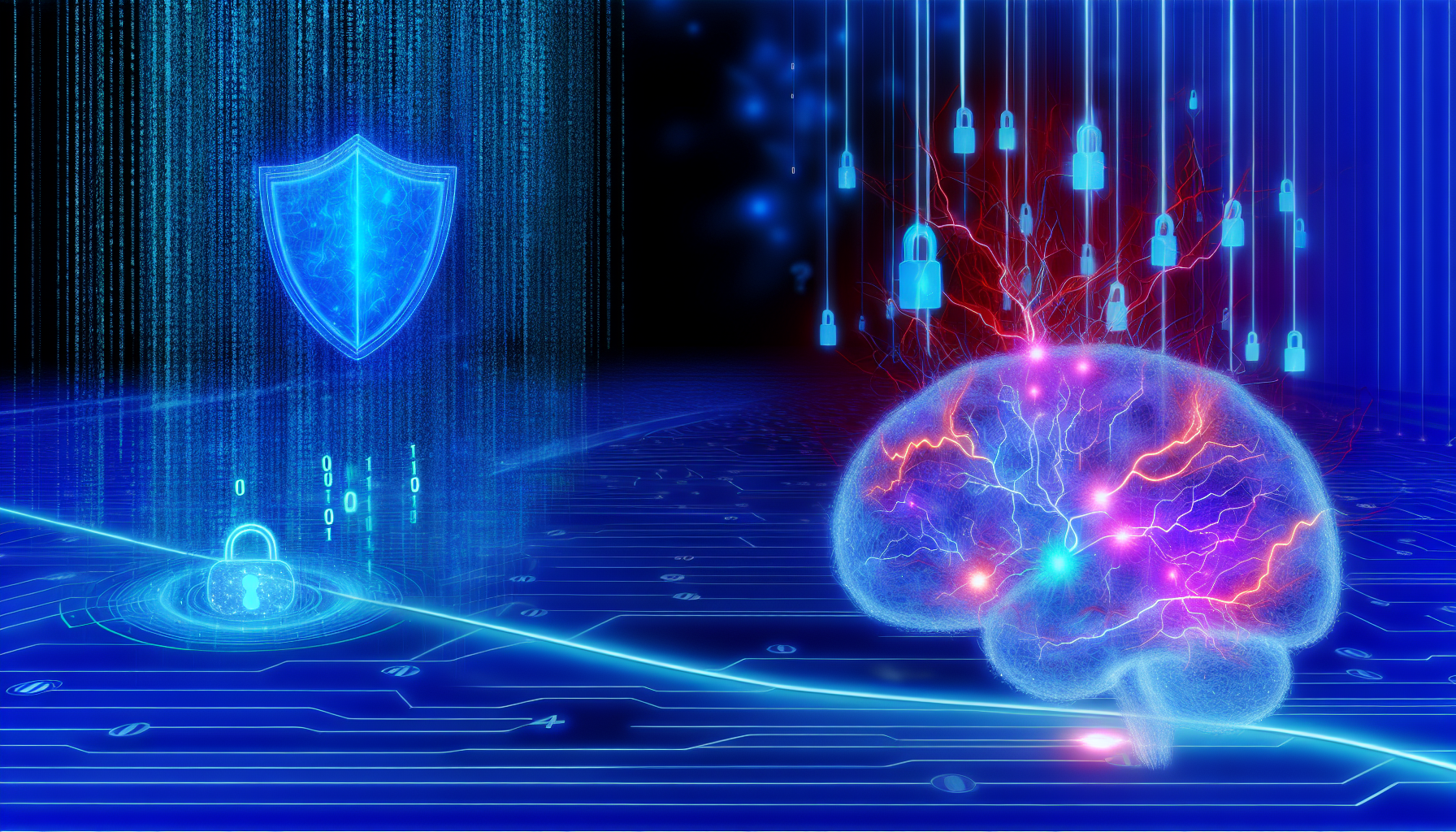In today’s digital age, the advent of artificial intelligence (AI) has transformed nearly every sector, including cybersecurity. As cyber threats grow more sophisticated, organizations increasingly turn to AI-based solutions to bolster their defenses. However, while AI offers numerous advantages, it also introduces new vulnerabilities. This article explores the dual-edged nature of AI in cybersecurity, weighing its benefits against the potential risks it poses.
The Rise of Cyber Threats
As businesses and individuals have embraced digital transformation, the scale and complexity of cyber threats have exploded. From ransomware attacks to phishing schemes, malicious actors exploit technological vulnerabilities to achieve their goals. According to recent reports, cybercrime is projected to inflict damages exceeding $10 trillion annually by 2025. Hence, the urgency for advanced cybersecurity measures has never been greater.
AI-Powered Defense Mechanisms
AI-enhanced cybersecurity tools utilize machine learning algorithms to analyze vast amounts of data quickly, identifying anomalies and potential threats in real time. Here are several key ways AI strengthens cybersecurity defenses:
1. Threat Detection and Prevention
AI systems can analyze historical data and identify patterns associated with cyber threats. By continually learning from new data, these systems can detect unusual behavior that may signal an intrusion attempt or malicious activity. AI can enable quicker response times, significantly reducing the window of vulnerability and potential damage.
2. Automation of Security Tasks
With the ever-increasing volume of cyber threats, cybersecurity teams often find it challenging to manage alerts and incidents efficiently. AI can automate routine tasks such as log analysis, vulnerability scanning, and even certain types of incident responses. This automation leads to enhanced efficiency, allowing cybersecurity professionals to focus on more complex tasks that require human judgment.
3. Predictive Analytics
AI can help predict future threats by analyzing trends and patterns in cyber activity. By anticipating potential attacks, organizations can implement preemptive measures to fortify their defenses. This proactive approach is essential for industries that handle sensitive data, such as finance or healthcare.
4. Improved User Authentication
AI can enhance user authentication processes through biometric recognition, behavioral analysis, and anomaly detection. By monitoring user behavior in real-time, AI systems can identify deviations that may indicate unauthorized access, enabling more secure access control.
The Dark Side of AI in Cybersecurity
While AI undoubtedly offers powerful tools for cybersecurity defense, it also opens new avenues for cybercriminals. The very technologies that protect us can be weaponized:
1. AI-Driven Attacks
Cybercriminals can leverage AI to develop more sophisticated attacks. For example, they can use machine learning algorithms to bypass traditional detection systems, enabling them to launch effective phishing schemes that are harder for victims to recognize. By automating their attacks, malicious actors can scale their operations more efficiently than ever before.
2. Data Poisoning
AI systems rely on vast amounts of data to learn and improve their accuracy. However, if a cybercriminal succeeds in introducing malicious data into the training set—a process known as "data poisoning"—the AI can be misled, creating security blind spots. This poses a significant risk as organizations become increasingly reliant on AI-generated insights.
3. Evasion Techniques
Sophisticated AI models can develop tactics to evade detection systems. For instance, attackers may modify malware to mimic legitimate software, making it difficult for AI-based detection systems to distinguish between the two. The more proficient these AI systems become, the more challenging it is for cybersecurity teams to keep up.
4. Automation Meets Exploitation
Automating responses to threats can be both an asset and a liability. If an AI detects an anomaly and executes an automated response, there’s a risk of misinterpretation. If an AI misreads benign activity as malicious, it could lead to unwarranted actions, such as shutting down a critical system or blocking legitimate users from accessing vital services.
Balancing AI’s Benefits and Risks
The ongoing evolution of AI in the cybersecurity domain prompts essential questions about risk management and effectiveness. Organizations must adopt a balanced approach:
1. Human Oversight
AI should complement human expertise, not replace it. Organizations must ensure that skilled cybersecurity professionals are involved in critical decision-making processes. They should constantly evaluate AI’s effectiveness and assess the risks it may create.
2. Continuous Learning
Cyber threats evolve rapidly. Organizations must ensure that their AI systems are regularly updated and trained with fresh data to remain effective against emerging vulnerabilities and attack vectors.
3. Security by Design
Incorporating robust security measures during the development phase of AI tools can mitigate risks. By focusing on secure coding practices and rigorous testing, developers can create AI systems that are more resistant to manipulation.
4. Ethical Considerations
As AI becomes more integrated into cybersecurity, ethical considerations must remain a priority. Ensuring transparency in AI operations and outcomes can help organizations build trust and accountability around their systems.
Future Trends
As AI in cybersecurity continues to evolve, several exciting trends are expected:
1. Enhanced Collaboration
Organizations may start collaborating more to share data and insights, improving their collective defenses. AI could play a critical role in facilitating real-time information sharing among different entities.
2. Integration with Other Technologies
The future of cybersecurity may involve a more profound integration of AI with other technologies, such as the Internet of Things (IoT) and blockchain, providing a more layered defense strategy.
3. Personalized Security Solutions
AI can help tailor security measures to individual user behaviors and preferences, offering more personalized and adaptive security experiences.
FAQs
Q1: What specific types of AI can be applied in cybersecurity?
- AI technologies like machine learning, deep learning, and natural language processing are primarily used in cybersecurity applications.
Q2: Can AI fully replace human cybersecurity specialists?
- No, while AI can automate many tasks, human oversight is crucial in interpreting results and making complex decisions.
Q3: What are the risks of relying on AI for cybersecurity?
- Risks include data poisoning, AI-driven attacks, and potential automated errors that could misinterpret benign activities as threats.
Q4: How can organizations mitigate the risks associated with AI in cybersecurity?
- By implementing human oversight, ensuring continuous learning, practicing security by design, and maintaining ethical considerations, organizations can reduce AI-related risks.
Q5: Is AI effective against all cyber threats?
- While AI significantly enhances threat detection and response, no single solution is foolproof. Organizations adopt a multi-layered approach to security for the best results.
Conclusion
AI holds immense potential in reshaping the future of cybersecurity, offering robust solutions to existing challenges. However, as we cherish its advantages, we must remain vigilant about the vulnerabilities it introduces. By striking the right balance and ensuring ethical practices, organizations can harness AI’s power while safeguarding their systems against emerging and evolving threats.


